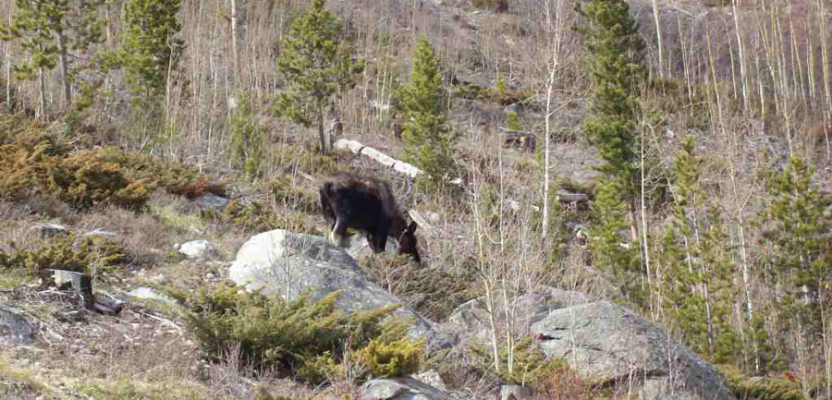A large survey-engineering firm had developed a subdivision, bounded by a section line on the north side and a 1950 subdivision and 1/16 line on the east side. By doing so they had exposed a five-foot overlap between the section line as run with GPS and the 1950 subdivision. They sought advice from the county commissioners. According to statutes, their subdivision would not be in effect until signed by the commissioners, then recorded.
At The Kid’s side was The Old Man, Glenny Dale, who had been surveying in these mountains for more years than anyone else in the room had been alive. Very few people now knew his real name. Long ago, some party chief named him “Glutton,” and that name stuck for so long that most locals just assumed his real name was “Glutton, The Old Man.” He volunteered for the U.S. Army on December 8, 1941, and became interested in surveying and skiing while serving in the 10th Mountain Division.
The chairman of the board announced that next on the agenda was the surveyor’s overlap problem. The press, the county attorney, the county manager, the county planning department head, and the county surveyor were there. The large firm’s surveyor explained to the board that he had found a half-mile long conflict in title and ownership.
The first to respond was the county attorney, saying, “How can that happen?”
The firm’s surveyor said that he had run the section line twice with GPS and was positive that he was correct and the 1950 subdivision was wrong by five feet. “All of the 1950 subdivision pins on the north side lie five feet over the true section line. We set all our north pins on the true section line. We need your advice on how to settle the question of title and ownership caused by the gap and overlap.”
The county surveyor made one statement in the hour-long meeting: “There is no gap or overlap,” he preached. “The section line was monumented in 1928, followed by the 1950 subdivision pins set with transit and chain in mountainous woods. The monuments define the property lines.”
This statement resulted in obvious shock from the county commissioners. One of the commissioners lectured back to the county surveyor, “No. If you follow the monuments, it will move each and every lot line by five feet, and we don’t want that!” The other commissioners agreed, saying, “That would cause the domino effect!”
The county planner and county manager complained that they would have to be consulted before changing every lot line in a subdivision. After one full hour of speculation by the county leaders, satisfied that they had saved the county, the county attorney ended the meeting by inviting the large surveying firm to file a quiet title suit.
Glenny Dale and Eager Kidinsky drove back to the very site where they were doing their survey and were now standing at a dual monumented 1/16 corner. One monument, a 3/8” rebar, was set in 1950 in accordance with all the standards in effect at the time, in good faith, with transit and tape.
The other monument was placed five feet south, a plastic-capped, 5/8” rebar, set midway between 1928 section corner and ¼ corner, with GPS, by the large firm. Eager squinted east and west, looking for that cut line that the Old Man always looked for, but saw nothing but thick trees. Meanwhile, Glutton brought a 30”x3/4” rebar, held it next to the 1950 rebar, and told Eager to pound it down. He then put his stamped 3” aluminum cap on it, and began preparing swing ties for the monument record.
Eager Kidinsky wondered out loud why the senior surveyor had decided that the 1950 rebar, which was five feet “off,” was the true 1/16 corner. “Shouldn’t we wait for instructions from the county?” Eager reasoned. “Doesn’t the BLM manual say we are supposed to set this 1/16 corner midway between, and let the courts settle all the gaps and overlaps?”
The Old Man explained his decision. “You can still see the old cut line along the 1950 line,” pointing his finger west. “Of course you can’t see any cut line five feet south. With GPS, we don’t walk the property lines. We just drive from one point to the next. In 1950, they recorded this subdivision plat, and that establishes legal title. The BLM manual acknowledges this in the appropriate instructions for resurveys, not the inappropriate instructions for original subdividing. The local surveyor’s monuments constitute property corners as defined by state law. So, the legal location of this line is right where I’m standing.” He pointed to his feet.
“Property lines do not lie in some future surveyor’s head,” he continued. “Property lines do not exist in a calculator. They exist right here on the ground, where the original surveyor placed it. There is no legal conflict. There are only normal measurement conflicts, which are supposed to be resolved by the surveyors, not the courts. That’s why we are licensed, not the county commissioners!
“The county surveyor was right. It’s too bad for the public that the rest of that hour was spent grandstanding for the press by county officials who have no idea how to survey instead of listening to his advice. Now, because of our fellow surveyors’ reliance on GPS as a licensed thinker instead of using it as a great measuring tool, our client on the north has five more feet of land, and we still need to survey in all of their pins today.
“And,” Glenny Dale lectured, “it’s going to take a little bit longer of a traverse since their pins do not follow the old cut line. Which is just as well, since it’s going to take about three years for the courts to rule with me once again.”

